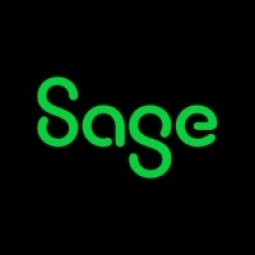公司规模
SME
地区
- America
国家
- United States
产品
- Sage 500 ERP
技术栈
- CRM
- Inventory Management System
实施规模
- Enterprise-wide Deployment
影响指标
- Productivity Improvements
- Cost Savings
技术
- 功能应用 - 企业资源规划系统 (ERP)
适用行业
- 电子产品
适用功能
- 离散制造
用例
- 库存管理
- 自动化制造系统
服务
- 系统集成
关于客户
Navtrak, Inc. 是一家为企业生产全球定位系统 (GPS) 设备的公司。该公司总部位于马里兰州索尔兹伯里,在五个不同地点运营。Navtrak 共有 65 名员工。该公司的 GPS 设备被企业用于准确及时地跟踪车辆。Navtrak 的主要客户是卡车、救护车、废物处理和公用事业行业的车队。
挑战
Navtrak 是一家全球定位系统 (GPS) 设备制造商,其 QuickBooks 财务软件面临挑战。该软件没有提供足够的审计线索、执行分析的能力或深度库存跟踪。它还允许人们在不应该删除交易时删除交易,导致公司几乎没有管理控制权。Navtrak 需要一种能够提供更好的财务管理、库存跟踪和业务运营总体控制的解决方案。
解决方案
Navtrak 决定实施业务管理软件 Sage 500 ERP 来应对挑战。选择该软件是因为其与 Navtrak 管理数据库和 CRM 的出色集成能力以及其用户友好的界面。Sage 500 ERP 现在几乎可以处理 Navtrak 的所有财务事务,包括所有一般会计功能以及库存和制造管理。该系统根据客户订单提取零件,分阶段处理生产,甚至通过运输管理订单。
运营影响
数量效益

Case Study missing?
Start adding your own!
Register with your work email and create a new case study profile for your business.
相关案例.

Case Study
Remote Temperature Monitoring of Perishable Goods Saves Money
RMONI was facing temperature monitoring challenges in a cold chain business. A cold chain must be established and maintained to ensure goods have been properly refrigerated during every step of the process, making temperature monitoring a critical business function. Manual registration practice can be very costly, labor intensive and prone to mistakes.

Case Study
Cloud Solution for Energy Management Platform-Schneider Electric
Schneider Electric required a cloud solution for its energy management platform to manage high computational operations, which were essential for catering to client requirements. As the business involves storage and analysis of huge amounts of data, the company also needed a convenient and scalable storage solution to facilitate operations efficiently.

Case Study
Leveraging the IoT to Gain a Competitive Edge in International Competition
Many large manufacturers in and outside Japan are competing for larger market share in the same space, expecting a growing demand for projectors in the areas of entertainment, which requires glamor and strong visual performance as well as digital signage that can attract people’s attention. “It is becoming more and more difficult to differentiate ourselves with stand-alone hardware products,” says Kazuyuki Kitagawa, Director of Service & Support at Panasonic AVC Networks. “In order for Panasonic to grow market share and overall business, it is essential for us to develop solutions that deliver significant added value.” Panasonic believes projection failure and quality deterioration should never happen. This is what and has driven them to make their projectors IoT-enabled. More specifically, Panasonic has developed a system that collects data from projectors, visualizes detailed operational statuses, and predicts issues and address them before failure occurs. Their projectors are embedded with a variety of sensors that measure power supply, voltage, video input/ output signals, intake/exhaust air temperatures, cooling fan operations, and light bulb operating time. These sensors have been used to make the projector more intelligent, automatically suspending operation when the temperature rises excessively, and automatically switching light bulbs. Although this was a great first step, Panasonic projectors were still not equipped with any capability to send the data over a network.






